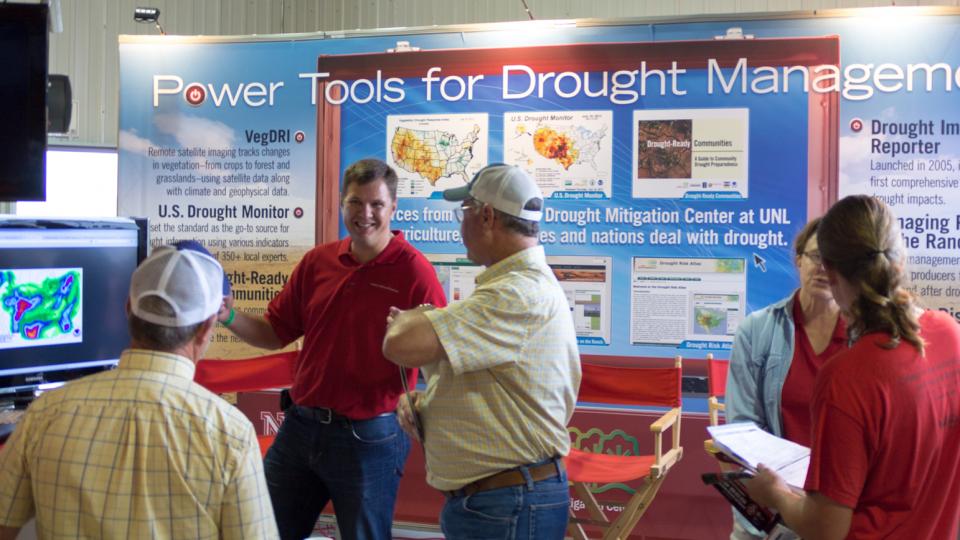
A federal official this week announced plans for the establishment of a new Drought Risk Management Research Center at the University of Nebraska-Lincoln.
The new center will help state and local government be better prepared to respond to drought, said retired Coast Guard Vice Admiral Manson Brown, who is assistant secretary of commerce for environmental observation and prediction and the deputy administrator of the National Oceanic and Atmospheric Administration, or NOAA. Brown made the announcement Wednesday at the annual meeting of the Western Governors' Association in Nevada, where coping with the ongoing multi-year drought in western states topped the agenda.
"The Drought Risk Management Research Center will fill a vital role in providing states, communities and businesses with the best available drought research, data and information," Brown said. "This critical environmental intelligence will strengthen their ability to stay resilient to drought and leverage the collaborative work of NOAA and other federal and state partners."
Though he did not attend the meeting in Nevada, Nebraska Gov. Pete Ricketts said the announcement is good news for the state and for agriculture.
"The Drought Risk Management Research Center is an exciting new partnership for the University of Nebraska that has great potential to benefit our whole state," he said. "Agriculture, our state’s No. 1 industry, feels the biggest impact of droughts, and benefits greatly from cutting-edge mitigation techniques and long-term planning for these events. The DRMRC will be an asset to our state and can help move agriculture forward to grow Nebraska."
The DRMRC will be established at the National Drought Mitigation Center at UNL. It builds upon the NDMC's 20 years of working with decision-makers to implement drought monitoring and planning. It also will enhance the capabilities of the National Integrated Drought Information System to work directly with states to plan for drought. NIDIS, which integrates federal drought monitoring and preparedness resources from many agencies, is led by NOAA.
NOAA's Sectoral Applications Research Program will support the new center with a three-year, $2.4 million grant. The center will launch this summer.
"This will solidify a long-standing relationship between NOAA, the National Integrated Drought Information System and the NDMC," said Michael J. Hayes, director of the National Drought Mitigation Center at UNL. "The emphasis on research will help us address critical needs related to drought monitoring, impact assessment and planning strategies. One of our goals will be to help states and other entities learn from each other based upon what they have experienced, such as what is happening across the West right now, and become more resilient to droughts in the future."
The DRMRC will conduct applied research on drought risk management by:
• helping lead the coordination of the U.S. Drought Monitor and supporting products and tools;
• working across all scales of drought preparedness and impacts, including local, state, regional, tribal, national, and international, and key socio-economic sectors;
• enhancing regional drought early warning systems and performing drought event assessments;
• advancing innovations in planning for drought, including incorporating drought into multi-hazard mitigation planning, and
• helping to communicate and coordinate across the NIDIS partner network.
The DRMRC will work closely with NOAA’s Regional Integrated Sciences and Assessments, the Regional Climate Centers, and other federal, tribal, state and regional efforts. The National Center for Atmospheric Research in Colorado will be another partner.